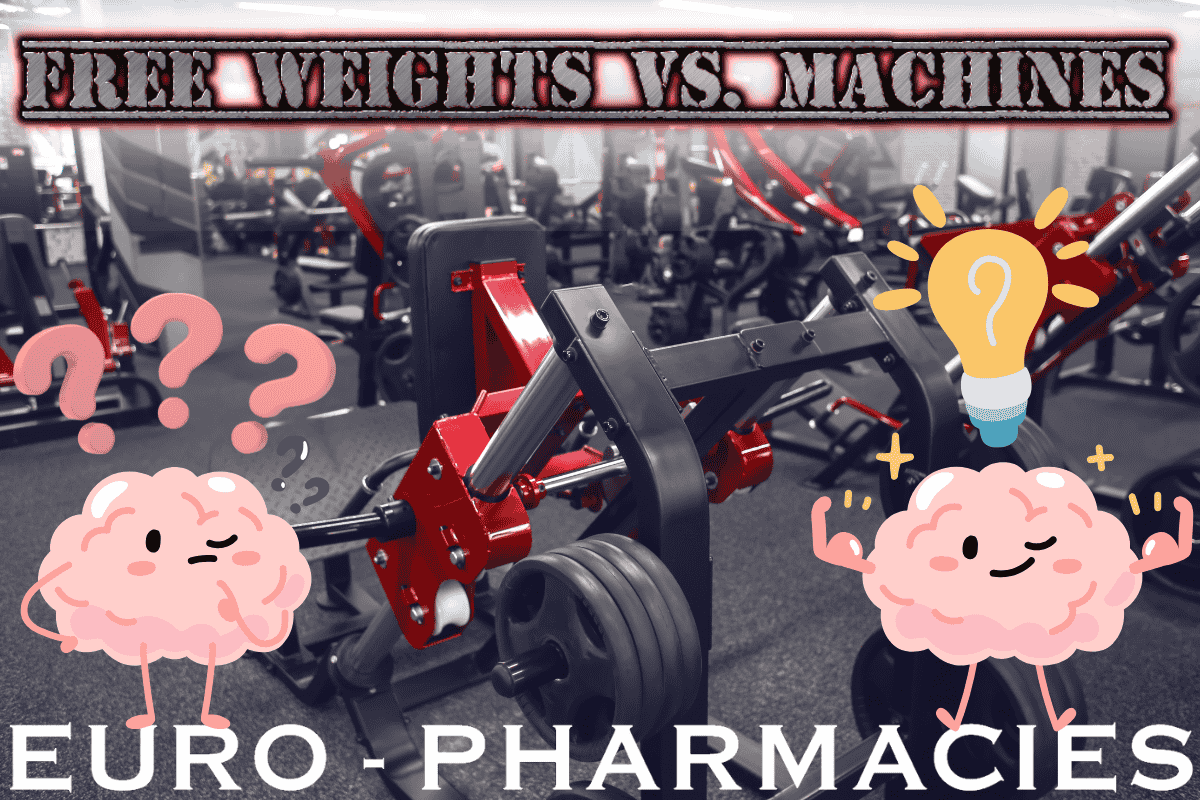What do the EP Pros say?
Abstract
Free Weights vs Machines: The Ultimate Showdown
Few debates in the gym are as enduring—or as passionately argued—as the battle of Free Weights vs Machines. Which is better for hypertrophy? For strength? For looking jacked at your high school reunion? This article dissects both modalities, compares their benefits and drawbacks, and uses a dash of humor and real-world examples to help lifters choose their iron destiny. Spoiler alert: both have their place. But one might just edge out the other in a flex-off.
Introduction: Iron vs. Iron—Let the Battle Begin
Ah, the gym. A sacred place where egos are inflated, sweat is currency, and debates are louder than your buddy’s ammonia-sniffing ritual. And perhaps no debate is as eternal—or entertaining—as Free Weights vs Machines.
On one side: the purists, clinging to barbells like they’re Excalibur. On the other hand: the tech-savvy lifters who glide from machine to machine like it’s an automated muscle massage.
So, which reigns supreme? Let’s break it down—scientifically, professionally, and with a sprinkle of gym-floor sarcasm.
Free Weights: The OGs of Iron
Pros
- More Muscle Activation – Free weights force your stabilizer muscles to clock in for duty. You’re not just pressing a dumbbell—you’re balancing it, wrestling it, bonding with it. That’s why many argue free weights dominate the Free Weights vs Machines debate.
- Greater Functional Strength – Real-world strength often mimics compound movements. Free weights help you lift the couch when your mother-in-law visits.
- Versatility – One barbell. Infinite possibilities. Squat it, curl it, press it, row it. It’s the Swiss Army knife of gains.
- Engages Core – Want abs without crunches? Try overhead pressing a heavy dumbbell without tipping like a drunken pirate.
Cons
- Higher Injury Risk (if careless) – Poor form with free weights is like texting while driving—bad things happen fast.
- Learning Curve – Not beginner-friendly. You’ll look like a newborn giraffe the first time you back squat.
- Requires Spotters for Heavy Lifts – Unless you’re filming a viral fail video, don’t max bench without a spotter.
Machine Weights: Gains on Rails
Pros
- Safer for Beginners – Machines offer guided motion, making it hard to mess up unless you’re actively trying to.
- Easier to Isolate Muscles – Great for hypertrophy. Want to blast quads without frying your glutes? Leg extension to the rescue.
- Less Need for Stabilization – You can go heavier without wobbling like Jell-O in an earthquake.
- Convenient & Quick – Perfect for time-crunched lifters who want efficiency in the Free Weights vs Machines showdown.
Cons
- Limited Range of Motion – Some machines force your body into awkward patterns. Like dancing to techno: mechanical and stiff.
- Lacks Functional Carryover – You might leg press a small car but still struggle with stairs.
- Can Create Imbalances – Over-reliance may neglect stabilizers and lead to muscle asymmetry—hello, chicken legs.
The Science of Muscle: Which Builds More?
Studies consistently show that free weights typically elicit more muscle activation, especially in compound lifts like squats and presses (Schoenfeld, 2010). That’s why many researchers suggest free weights have the edge in the Free Weights vs Machines comparison.
However, machine training still produces substantial gains, particularly when isolating muscles or training to failure (Paoli et al., 2017). Machines also shine in rehab, injury prevention, and high-volume metabolic work. In reality, both tools bring value to the table—and both belong in a smart lifter’s plan.
Real-Life Gym Scenarios: The Choice in 4 Action
- New Lifter: Start with machines to build confidence and basic strength. Graduate to free weights when your dumbbell doesn’t resemble a kettlebell in free fall.
- Bodybuilder on a Cut: Machines help isolate and target specific muscles with surgical precision. After all, when you’re hangry, balance is overrated.
- Powerlifter in Off-Season: Base your training on free weights to build total-body strength, and use machines for accessory work and volume.
- Busy Parent with 30 Minutes: Machines keep things efficient. No setup, no hassle. Just hop in and pump out reps like a gain-making robot.
These examples show that Free Weights vs Machines isn’t about winners and losers—it’s about timing, goals, and training style.
The Hybrid Approach: Why Not Both?
This isn’t a team sport. You don’t have to pick sides like it’s the Iron Throne.
Use free weights for foundational, compound strength-building lifts—squats, deadlifts, rows, and presses. Then use machines for accessory work, burnout sets, or when your stabilizers have already RSVP’d to the pain party.
Think of it this way: Free Weights vs Machines isn’t a rivalry—it’s a partnership. Free weights are your steak and potatoes. Machines? That’s dessert—you don’t need it, but it sure makes the meal complete.
Conclusion: So, Who Wins?
Drumroll, please… It’s a tie. (Kind of.)
If you’re chasing total-body strength, functional fitness, and raw mass, free weights take the crown. But if you’re aiming for isolation, safety, convenience, or hypertrophy after a grueling compound set, machines shine.
The smartest lifters know the truth: Free Weights vs Machines isn’t about choosing one—it’s about using both. And the wisest don’t argue about it on forums—they’re too busy training.
So rack the dumbbell, wipe the machine seat, and remember: it’s not what you lift—it’s how you lift that builds results (and prevents you from becoming a gym meme).
References
Kraemer, W. J., & Ratamess, N. A. (2004). Fundamentals of resistance training: progression and exercise prescription. Medicine & Science in Sports & Exercise, 36(4), 674–688.
Schoenfeld, B. J. (2010). The mechanisms of muscle hypertrophy and their application to resistance training. Journal of Strength and Conditioning Research, 24(10), 2857–2872.
Paoli, A., et al. (2017). Resistance training: benefits, practical applications, and beneficial effects on health. Sport Sciences for Health, 13(1), 1–10.

